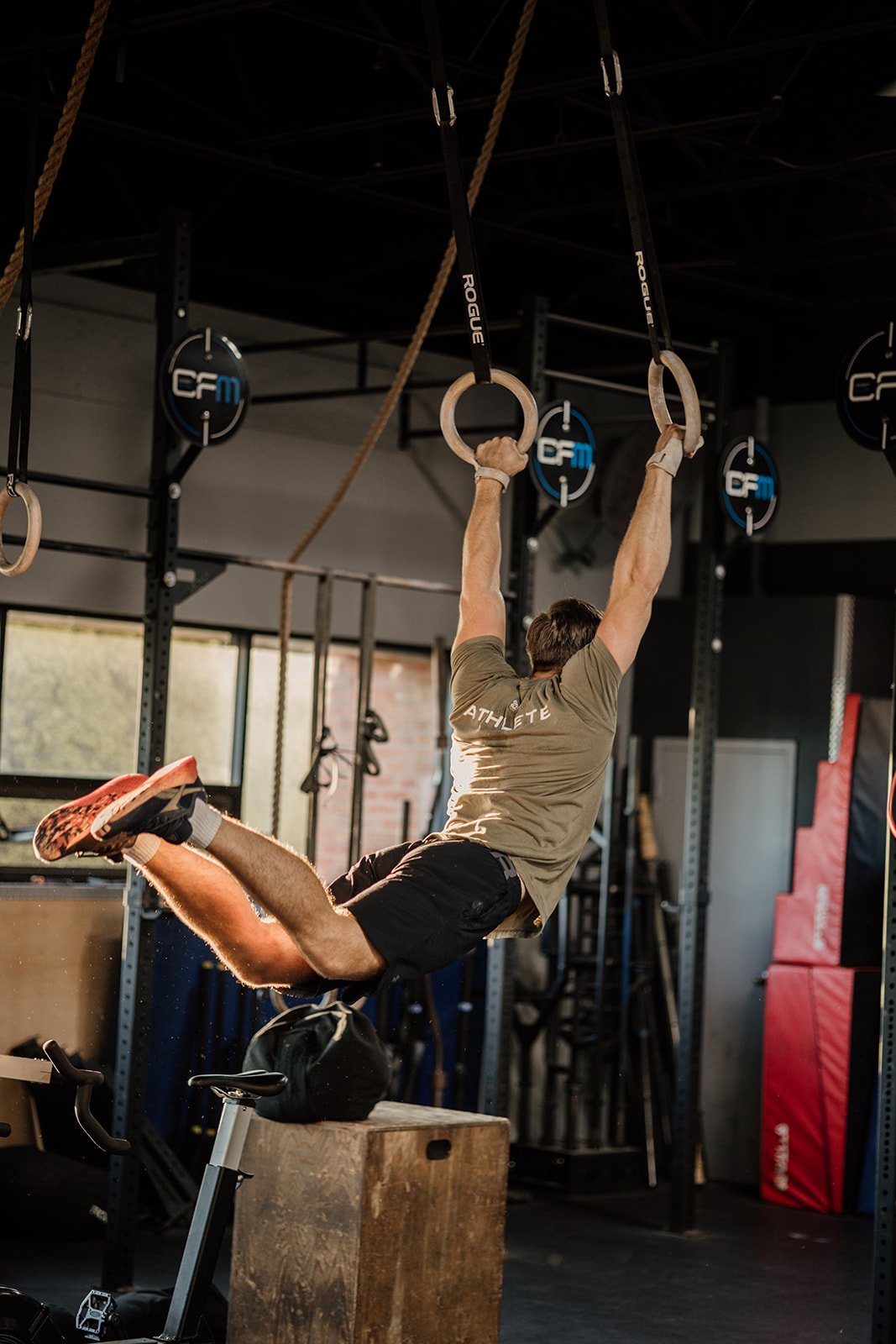The "Accessory" Trap: How Piecing Together Random Programs Is Killing Your Progress
We see it time and time again, well-intentioned athletes who put the time in at the gym, but they’re not making progress. They’re following one program for strength, one for their engine, and another for gymnastics work. The problem with that is that there’s no cohesive plan that takes into account what each “piece” is building to. Things are building at different times, peaking at different times, aka they’re not “talking to each other”.
Program design is an art, there’s so many variables when it comes to building a program. Fatigue principles, intensity prescriptions, internal and external stress, time, athlete experience, injuries, the list goes on and on. If you’re serious about reaching your highest potential, which I’m sure you are if you’re reading this, I’m here to tell you that your piecemail program is killing that potential.
Let's talk adaptation
As a coach, it’s our job to create a program that delivers our athletes a sufficient training stimulus that creates a high enough level of stress to challenge their current level of fitness. If that's done and they have good recovery practices in place they will improve their baseline fitness (supercompensation) without overreaching them. It’s important to build the program so it respects this principle (below) with regards to the different muscle groups being trained day to day and week to week.
Supercompensation (Adaptation)
When we pick and choose programs that aren’t cohesive, it’s very challenging, and I dare say impossible, to respect this principle because they all have their own focuses. When they have their own focuses you end up overly fatiguing muscle groups and never end up completely adapting to the training because they have limited time to recover and supercompensate because they’re constantly being trained.
Intensity
Intensity is something that gets bastardized in the world of CrossFit. The brand itself is built on “intensity”, but it’s misunderstood, and too much intensity for too long will cause you to stagnate.
The thing we want to be aware of here is that when you’re working with different programs, the intensities are too variable from day to day because they aren’t taking into account the other supplemental work they’re completing on the other programs.
When it comes to intensity there’s two types: relative intensity and absolute intensity.
Relative intensity is training that feels hard, it feels high effort. For example, 21.15.9, thrusters and pullups feels really freaking hard. More times than not it’ll leave you on the floor wondering what just happened. And while it’s hard, it’s less neurologically demanding than absolute intensity.
Absolute intensity, on the other hand, would be percentages over 85% in compound movements like cleans, back squats, deadlifts, etc. These lifts, at those loads, require maximal effort to complete. They don’t just feel hard, they can negatively impact your nervous system if done too frequently or in too high a volume.
The more advanced you are as an athlete the more your program needs to take intensity and adaptation principles into account if you want to progress long term and stay injury free.
Here are some general guidelines to intensity:
High Intensity:
Compound lifts working at or above 85%
Alactic Anaerobic & Anaerobic Energy Systems work, 90%+ Effort
Strict Gymnastics Work
High Skill Gymnastics w/ an athlete w/ low proficiency
Moderate Intensity:
Compound lifts working between 70-85%
Aerobic Energy Systems work between 75-90%, pace must allow for consistency and repeatability
Dynamic Gymnastics Contractions in volumes the athlete can recover from
Low Intensity:
Compound lifts <70%
Aerobic Energy Systems work between 55-65%, pace must allow for consistency and repeatability, recovery focused
Isometrics
Concentric focused movements
7-Day CrossFit Programming Sample
-
A. Bench Press
Build to a heavy 5 for the day
B. Deadlift
Build to a heavy 5 for the dayC. SHSPU
Death ByD. 2k Row
@high effort -
A. Power Clean
70% x1.1.1
75% x1.1
80% x1.1Rest till recovered
B. Push Press
70% x4-6 reps with 1 RIR x3 sets
C. EMOM 30 @75-80%
1 - Renegade row x12
2 - 12-15 wall balls
3 - :50 row
4 - x8 Hang DB Snatch
5 - Rest
-
x45min
Bike Erg @70-75%
Every 5min complete :30 ring plank hold and a :30 wall sit
-
Rest
-
A. Weighted Strict Pullup
3.3.2.2.1.1, building
B. Front Squat
Build to a challenging double then drop to 10% and hit 2 x 3-4 reps
C. EMOM 8
x2 RMU + 4-6 strict dips
D. :15 air bike
@very high effort, rest 3min x4 -
A1. DB RFESS
@30x1 x8 r:15A2. Incline DB Bench Press
@30x1 x8 r:2min x4B1. SL KB RDL
controlled x8 r:15B2. Seated Hand Over Hand Sled Pull x100’
@heavy UB r:2min x4C. @80% x6 sets
12-15 UB TTB
Rest :30
50 double unders
Rest 2min
-
Rest
So, to wrap this up, if you’re going to follow a templated program, do your research. Find ONE that is principle-based and is built specifically for the sport you’re participating in. Do your best to avoid putting programs together from different companies, coaches, and strength and conditioning qualities. Piecing them together is going to limit your progress on all fronts and you’ll never get the most out of any of them.
See you on the podium,
-Coach Ryan Bucciantini
To learn more about Conquer Athlete’s Individual CrossFit Programming, click here.

